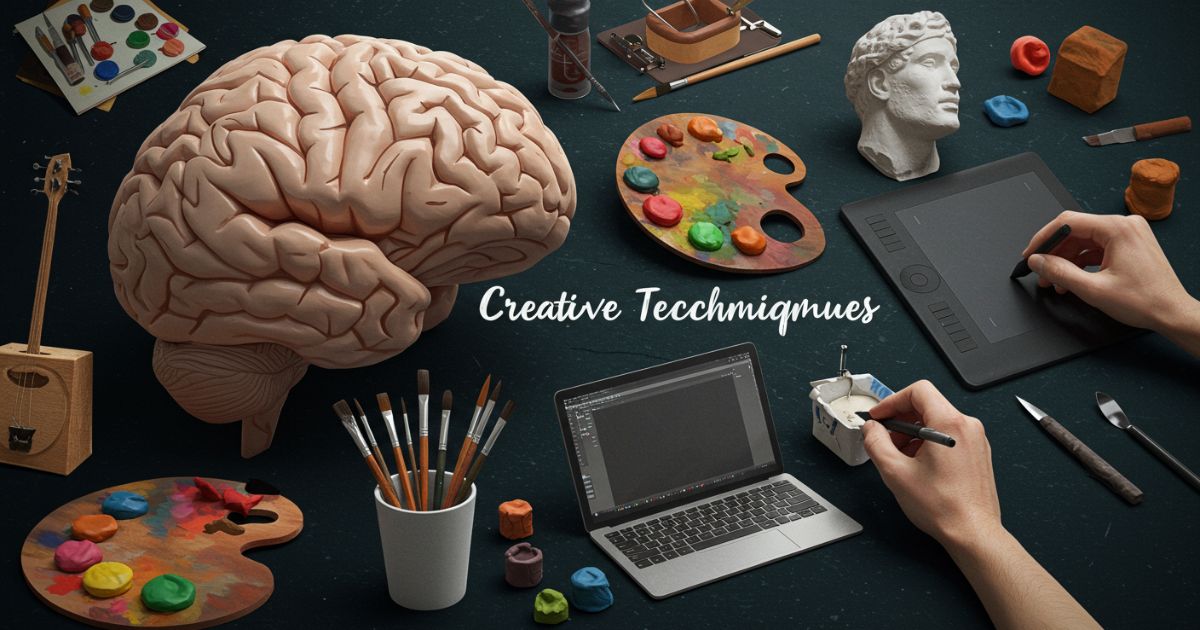
Innovation is the lifeblood of progress in today’s fast-paced business world. Whether you’re a budding startup or an established enterprise, developing a systematic approach to generating and nurturing breakthrough ideas can propel your organization to new heights. Stay with us, we’ll explore 11 creative techniques—from design thinking workshops to customer co-creation—that will help you unlock the full innovative potential of your team.
What is a Creative Technique?
A creative technique is a structured method or approach designed to help individuals or teams generate new ideas, solve problems, and explore possibilities beyond conventional thinking. These techniques provide a framework that encourages innovation, fosters ideation, and unlocks untapped potential in both personal projects and organizational initiatives.
Popular creative techniques include brainstorming, mind mapping, SCAMPER, lateral thinking, and design thinking exercises. Each method approaches problem-solving differently: brainstorming promotes the free flow of ideas, mind mapping visualizes connections between concepts, and SCAMPER encourages systematic modifications of existing solutions.
By applying these methods, teams can overcome mental blocks, stimulate creative problem-solving, and develop innovative strategies for products, services, or processes. In essence, a creative technique is not just a tool—it’s a catalyst for transforming imagination into actionable results, helping individuals and organizations stay competitive in rapidly changing environments.
11 Creative Techniques and Innovation Methods to Boost Idea Generation
1. Design Thinking Workshops

Design thinking is a human-centered approach that encourages deep empathy, ideation, and prototyping. By organizing interactive workshops where team members walk through the five stages—empathize, define, ideate, prototype, and test—you create a structured environment for problem-solving. Start with understanding user pain points, then brainstorm a wide range of solutions before rapidly building low-fidelity prototypes. The key is to iterate quickly based on feedback, ensuring that ideas evolve organically rather than being constrained by hierarchy or traditional planning. These workshops not only generate fresh concepts but also foster a collaborative mindset that values experimentation and learning from failure.
2. Brainwriting Sessions
Unlike traditional brainstorming, brainwriting allows participants to individually jot down ideas on paper or digital templates before sharing them with the group. Each person writes down three to five concepts in the first five minutes, then passes their notes to a neighbor who builds on or refines the ideas. This rotating approach reduces groupthink, giving quieter voices equal airtime and leading to a broader spectrum of solutions. Brainwriting sessions are beneficial in large groups or multicultural teams where some members may be hesitant to speak up immediately.
3. Hackathons and Innovation Sprints
A hackathon is an intense, time-boxed event where cross-functional teams collaborate to solve a specific challenge or develop a prototype. Innovation sprints borrow from agile methodologies, condensing research, ideation, and prototyping into one- to three-day sessions. By setting clear goals, providing necessary resources, and encouraging a playful atmosphere, hackathons and sprints energize participants and often yield unexpected, high-impact solutions. Ultimately, teams demo their prototypes, receive feedback, and identify next steps for development or scaling.
4. Mind Mapping and Visual Brainstorming
Mind mapping taps into the power of visual thinking to explore connections between ideas. Begin with a central theme—such as a customer need or market trend—then branch out with related concepts, features, or challenges. Using digital tools or large whiteboards, invite team members to add their thoughts as nodes, linking and grouping similar ideas. This technique not only reveals hidden relationships but also sparks associative thinking, helping participants leap from one concept to another in creative ways.
5. Reverse Innovation
Reverse innovation flips the script by looking at solutions developed for emerging markets or smaller-scale applications and adapting them for mainstream use. Encourage your team to study how constraints—limited budgets, infrastructure challenges, or unique user behaviors—have led to ingenious products or services elsewhere. By reframing problems with scarcity in mind, you may uncover leaner, more cost-effective solutions that resonate with a broader audience back home.
6. Role Storming

Role storming adds a playful twist to ideation by having participants adopt the persona of a specific stakeholder—such as a key customer, competitor, or even a fictional character. When you think like a hard-to-please executive, a tech-savvy teenager, or a rival CEO, new perspectives emerge. This method breaks habitual thought patterns and encourages team members to step out of their comfort zones, generating insights they might not arrive at through conventional brainstorming.
7. SCAMPER Technique
SCAMPER is an acronym for Substitute, Combine, Adapt, Modify, Put to another use, Eliminate, and Reverse. It’s a checklist-driven approach that prompts innovators to examine existing products, services, or processes in different ways. For example, ask what could be substituted or eliminated to simplify a workflow, or how components could be combined to deliver new value. The SCAMPER framework ensures comprehensive exploration of possibilities while keeping the focus on actionable changes.
8. Innovation Labs and Pilot Programs
Establishing an innovation lab or launching a pilot program provides a dedicated space to test wild ideas without disrupting core operations. Equip the lab with rapid prototyping tools—3D printers, VR headsets, or low-code platforms—and assemble small, multidisciplinary teams. Set clear evaluation criteria (feasibility, user feedback, potential ROI) and a fixed timeline. Successful pilots can then be scaled across the organization, while lessons learned from less successful experiments feed back into your innovation playbook.
9. Cross-Functional Collaboration
Innovation thrives at the intersection of diverse skill sets and viewpoints. Actively mix teams from R&D, marketing, customer support, finance, and operations to tackle strategic challenges. Regularly rotate members so that knowledge transfer becomes part of your culture. When engineers, designers, and data analysts brainstorm side by side, they bring unique expertise and spot opportunities or blind spots others might miss.
10. Customer Co-Creation
Your end users are a goldmine of insights. Invite customers to co-create solutions through focus groups, beta testing, or online innovation communities. Provide prototypes or mockups and let them suggest features, redesign elements, or even propose entirely new offerings. By involving customers early, you validate demand, strengthen loyalty, and reduce the risk of launching products that don’t meet real market needs.
11. Continuous Learning and Iteration
True innovation is not a one-time event, but an ongoing cycle of learning, testing, and refinement. Encourage teams to document experiments, track key metrics, and share outcomes—both successes and failures—in a centralized knowledge portal. Host regular “fail fairs” where employees showcase what didn’t work and discuss takeaways. This transparency builds resilience and keeps the organization adaptive, ensuring that every experiment, regardless of the result, fuels future progress.
Conclusion
By integrating these 11 Creative Techniques into your innovation toolkit, you can move beyond ad-hoc brainstorming and foster a structured yet flexible environment for breakthrough thinking. From immersive design thinking workshops to customer co-creation and continuous iteration, each method addresses different stages of the ideation-to-prototype journey. The key is to experiment with multiple approaches, measure impact, and refine your processes based on real-world feedback. Over time, these practices become embedded in your culture of innovation, strengthening your innovation mindset, enhancing team collaboration, and improving overall idea generation and problem-solving methods.
Getting Started: A Quick Checklist
- Define your top business challenge or opportunity.
- Select two or three techniques from above to pilot this quarter.
- Assemble a small, cross-functional team and secure leadership sponsorship.
- Schedule dedicated time and workspace for ideation sessions.
- Collect feedback, track metrics, and document learnings.
- Iterate on your process and scale successful experiments.
Ready to transform ideas into impact? Start small, stay curious, and let these techniques guide your journey toward a more innovative organization.
Leave a Reply